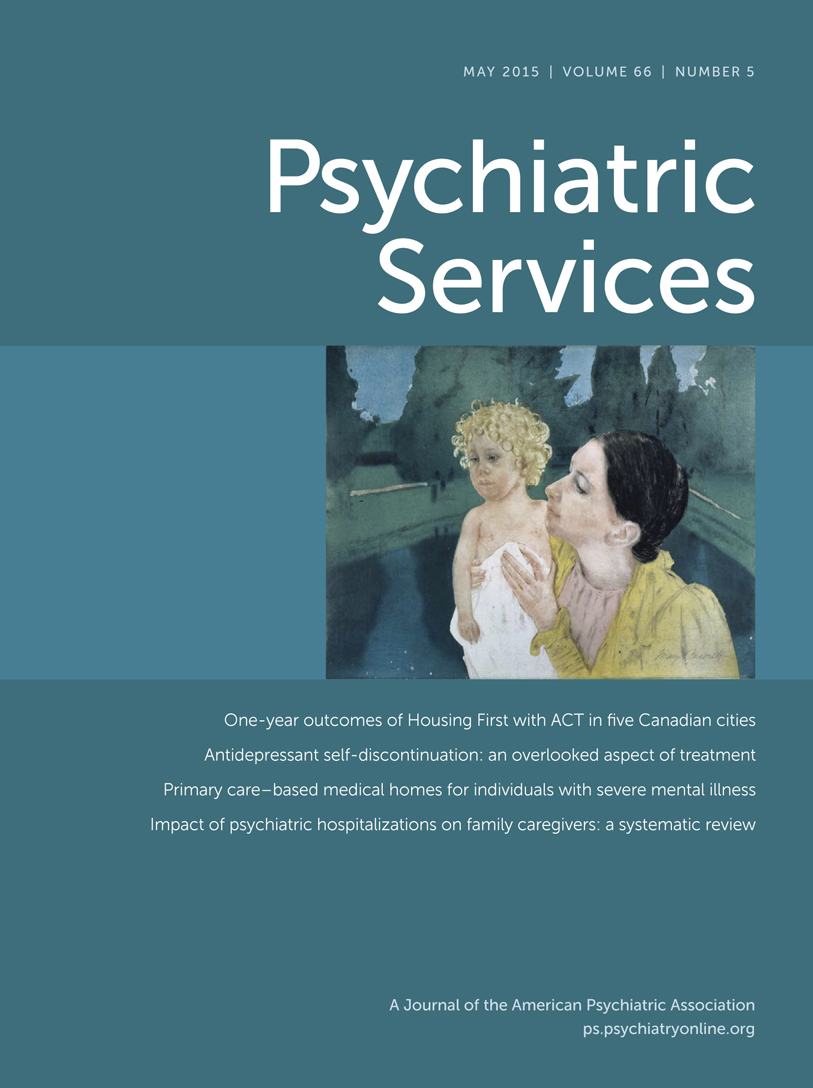Predictors of Recurrent Use of Psychiatric Emergency Services
Abstract
Objective:
Many patients visit psychiatric emergency services several times per year, which raises questions about the limits of this treatment setting. Previous studies have focused on recurrent visits over one year of follow-up. This study examined sociodemographic and diagnostic predictors of recurrent visits (three or more visits a year) to a psychiatric emergency service over three consecutive years.
Methods:
This three-year retrospective cohort study used data from computerized administrative and medical records of 4,322 patients who visited the psychiatric emergency service of the University Hospitals of Geneva, Switzerland, at least once in 2008.
Results:
A total of 210 (5%) of the 4,322 patients had three or more visits in 2008. Of these, 22% also had recurrent use (three or more visits per year) in 2009, 2010, or 2011, and 78% did not. Recurrent visits were not predicted by sociodemographic characteristics, such as age, gender, marital status, professional activity, and citizenship. Two variables were significant predictors of recurrent visits: a diagnosis of a personality disorder and recurrent use of the emergency service in the 18 months before study entry in 2008.
Conclusions:
Patients with personality disorders and past recurrent use of emergency services appeared to rely more on psychiatric emergency services for continuous psychiatric care than patients without past recurrent use of emergency services and patients with mood, substance use, anxiety, or psychotic disorders. Creation of a follow-up treatment program for this clinical population within the psychiatric emergency setting itself may provide better access to care for these patients.



